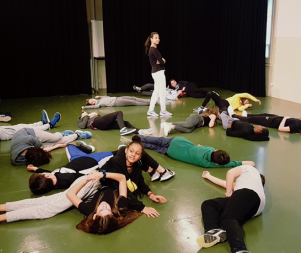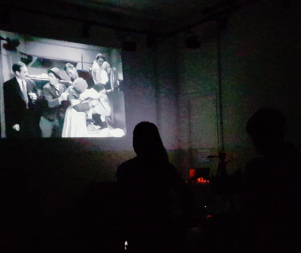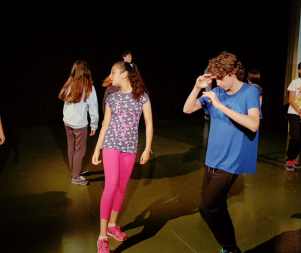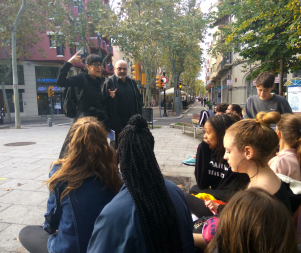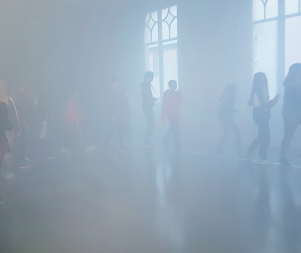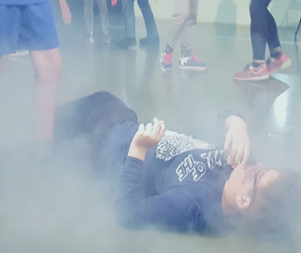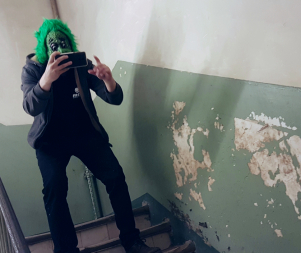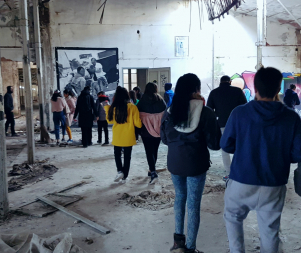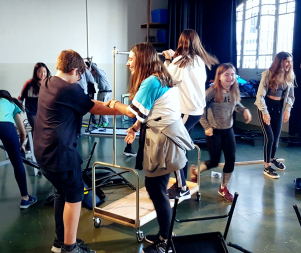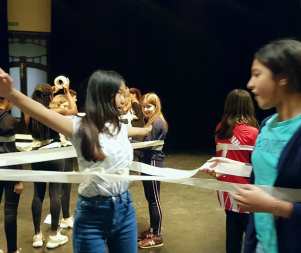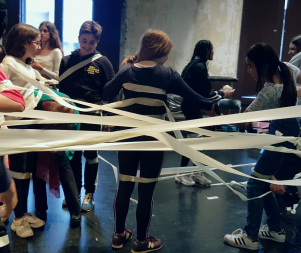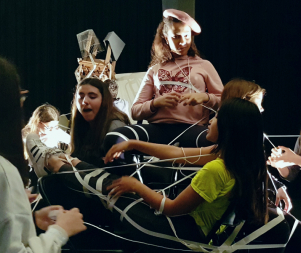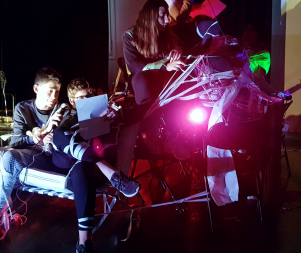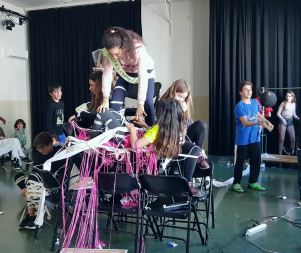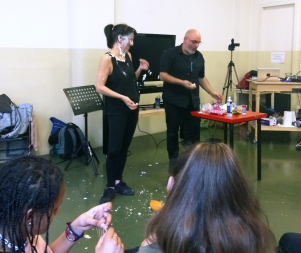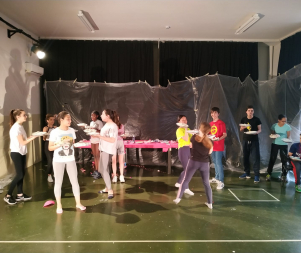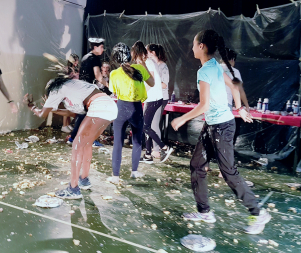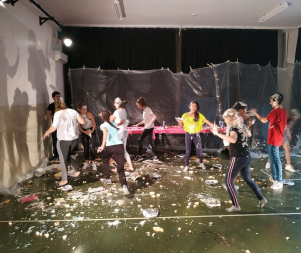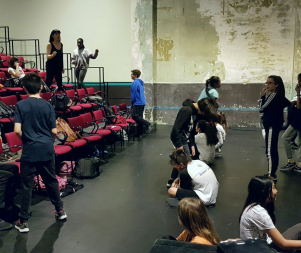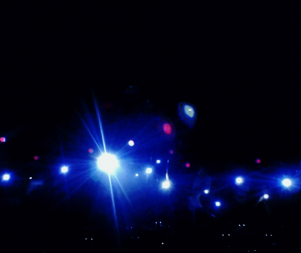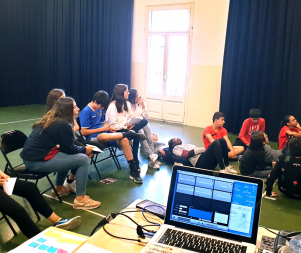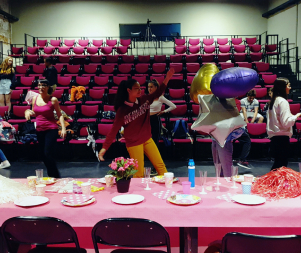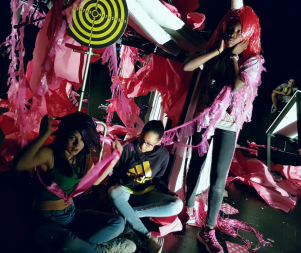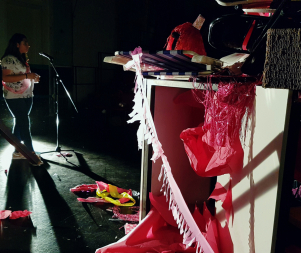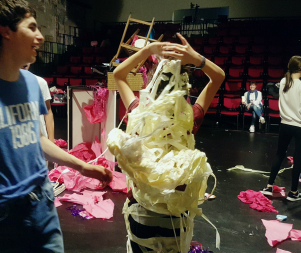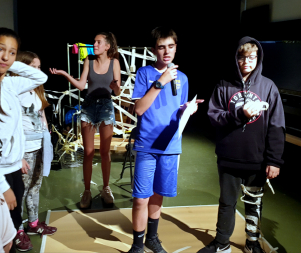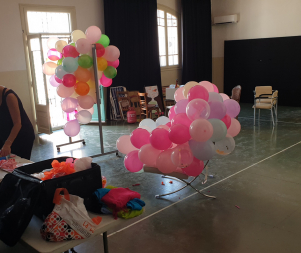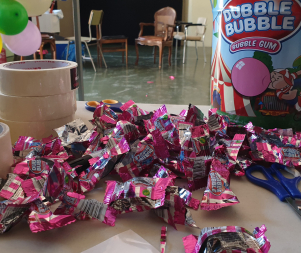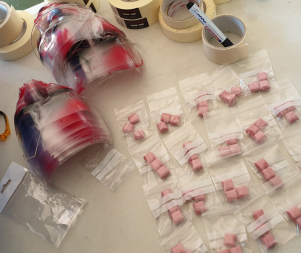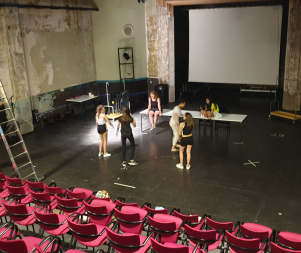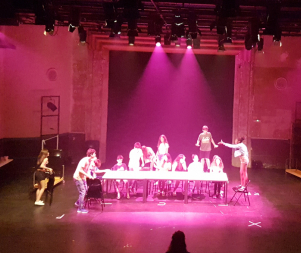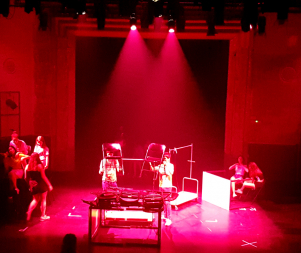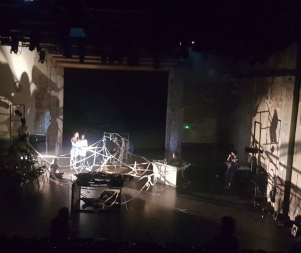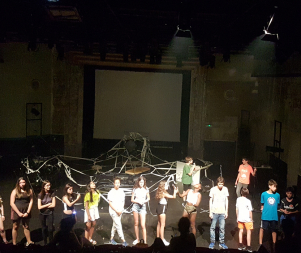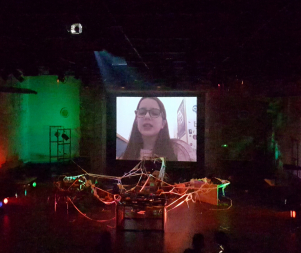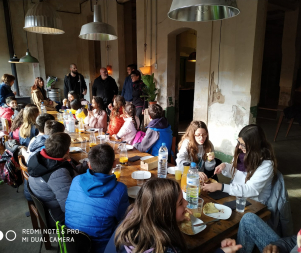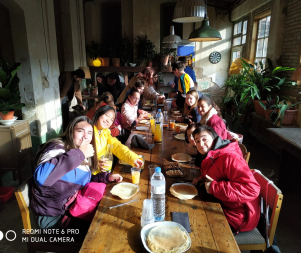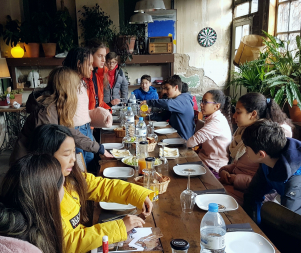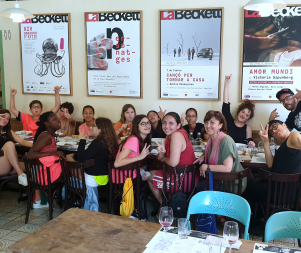- 14th EDITION 2022 / 2023
- 13th EDITION 2021 / 2022
- 12th EDITION 2020 / 2021
- 11th EDITION 2019 / 2020
- 10th EDITION 2018 / 2019
- 9th EDITION 2017 / 2018
- 8th EDITION 2016 / 2017
- 7th EDITION 2015 / 2016
- 6th EDITION 2014 / 2015
- 5th EDITION 2013 / 2014
- 4th EDITION 2012 / 2013
- 3rd EDITION 2011 / 2012
- 2nd EDITION 2010 / 2011
- 1st EDITION 2009 / 2010
Agnès Mateus i Quim Tarrida IN RESiDENCE at the School Quatre Cantons
the whole process as their own
At the start of the project, the stage directors Agnès Mateus and Quim Tarrida suggested sharing with the students the creation process for a theatre production. This was about getting them involved in the decision-making process so they could experience the whole process as their own. It should be mentioned that this was the first time the Sala Beckett had mediated with stage artists who were not playwrights, and the difference was noted. Playwrights, (at least, those we had proposed so far), used to working alone, tend to adopt a rather more methodical and organised creation process. For Agnès and Quim, however, a creation process means chaos, from a good starting point. That is, more than chaos, accumulation of experiences, exercises, ideas, proposals and so on. And based on constantly trying things out, deciding what to discard and what to keep. In fact, from the very first day, Agnès and Quim explained that the creation process for them was like making a hodgepodge: in other words, it involves putting everything they find at hand into a pot until the times comes when the hodgepodge begins to taste of something. A creation then comes about that will gradually grow. This may be a rather graphic explanation of what the work process was like with the pair. This idea of what “making theatre” is, however, completely clashed with the notion the students had of it, since, for them, as they said on the first day of the course, making theatre involves learning a text by heart and performing it. And that is what they expected to do during the residence. However, Agnès and Quim very soon made it clear that this was not going to be their proposal.
The first few months, from October to February, were a period of getting to know each other and trial and error. On the one hand, Agnès and Quim presented themselves, spoke of their careers and offered excerpts from some of the shows they had staged up to then (especially their last show, Rebota, rebota y en tu cara explota, which was a great success). On the other hand, they continued proposing a diverse range of exercises for students to get to know them better. Most came from one which they did right at the start, when they asked the students to write down everything they liked and didn’t like on post-it notes and stick them on the wall, until the classroom walls were completely covered in them. This enabled Agnès and Quim to get to know their various tastes (and things they hated) and think up exercises which would somehow motivate the children. So, one day they taught choreographies for Fortnite; another day, they had to dance as if they were at a disco; another day they all went over to the toilets and did an exercise there to gain awareness of the space; later on they also had to do an exercise in the classroom in total darkness and silence; one day they went out to the street and made those who usually do not pay attention focus on details and write stories based on these details etc. These were exercises where there was no right and wrong, good or bad: it was simply about students learning to let themselves go and play, as freely as they were able to; something that was sometimes not as easy as it appeared.
From March on, the time arrived to get the project off the ground. Agnès and Quim made a selection from among all the exercises carried out (and from other new ones: one day they proposed trying out a custard-pie fight — I won’t mention how the rehearsal room ended up !— and, on another day, reading a text aloud while those who were not reading accompanied them by performing a concert with the sound of popping bubble-gum) and established a possible structure. That does not in any way mean that their proposal at the time was already the final one. The children had to keep trying them out and, on the basis of this , things were discarded and more added: this works, perfect; we don't like that, leave it out. And the students noticed that one thing could be really lovely (or fun or interesting) when taken alone, but, when taken together, where everything has to come together and nothing can be out of place, it's sometimes necessary to sacrifice things we like but which don't fit in.
The process was slow. The students really enjoyed it but sometimes they were not clear about where it was taking them, where they were going, since, as I have mentioned before, at the start of the course they were expecting to take part in a rather more traditional play (with a fictitious story, specific characters and a plot, development and denouement) but Agnès and Quim altered their expectations, suggesting that they should create a performative and experimental play, without a linear narrative.
Finally, the last month, now with a clear and defined structure, in each session they went over some of the scenes and cleared up any doubts relating to the structure and who was doing what. At the same time, the students made the most of the third hour, revisiting scenes that had already been rehearsed, going over the text, practising what had not come out well and adding small changes to the text. The show gradually started taking shape.
The play’s rehearsal process (and, in fact, practically the whole residence) took pace in a performance hall at the Sala Beckett.

